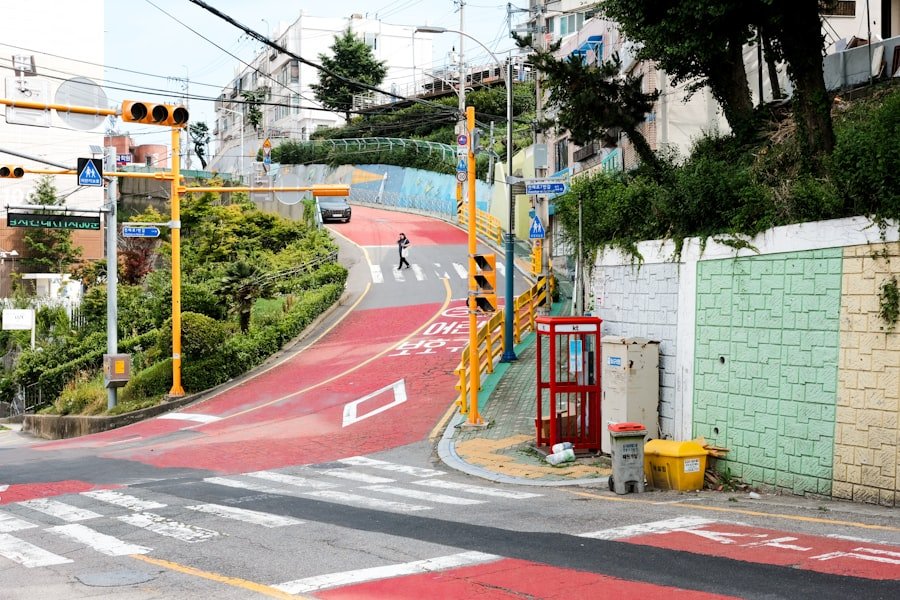

The Grammar of Expressing Reasons in Korean
The Korean language, with its intricate grammar and rich vocabulary, offers a variety of ways to express reasons. Understanding how to articulate reasons is essential for effective communication, as it allows speakers to clarify their intentions and provide context for their actions. In Korean, the structure of sentences often relies on specific grammatical forms that convey causality, making it crucial for learners to grasp these nuances.
This article will delve into the various grammatical constructions used in Korean to express reasons, providing examples and insights into their usage. Expressing reasons in Korean is not merely about stating a cause; it involves a deeper understanding of the relationship between actions and their motivations. The language employs a range of conjunctions and verb endings that serve to connect clauses and elucidate the rationale behind actions.
By mastering these forms, learners can enhance their conversational skills and engage more meaningfully with native speakers. This exploration will cover several key grammatical structures, each with its unique application and context. Begin your Korean studies at the NLS language school, right here in Oslo.
Table of Contents
ToggleSummary
- The grammar of expressing reasons in Korean is essential for effective communication.
- Conjunctions such as -기 때문에, -아/어서, -는데, -는 까닭에, -으니까, -아/어야 하니까, -아/어야 해서, and -는 이유로 are commonly used to express reasons in Korean.
- -기 때문에 is used to express a reason or cause, and it is placed after a verb stem or adjective stem.
- -아/어서 is used to connect two clauses and express a reason or cause, and it is placed after a verb stem or adjective stem.
- -는데 is used to express a reason or cause, and it is placed after a verb stem or adjective stem.
Conjunctions for Expressing Reasons in Korean
In Korean, conjunctions play a pivotal role in linking ideas and providing clarity in communication. When it comes to expressing reasons, certain conjunctions are particularly useful. One of the most common conjunctions is “왜냐하면” (waenyahamyeon), which translates to “because” in English.
This conjunction is often used to introduce a reason following a statement, making it an essential tool for learners aiming to articulate their thoughts clearly. Another important conjunction is “때문에” (ttaemune), which also means “because of.” This form is typically used to indicate that something occurs as a result of a specific cause. For instance, one might say, “비가 오기 때문에 집에 있어요” (Biga ogi ttaemune jibe isseoyo), meaning “I am at home because it is raining.” The use of these conjunctions not only enhances the coherence of sentences but also allows speakers to convey their reasoning in a structured manner.
Using -기 때문에 to Express Reasons in Korean

The grammatical structure “-기 때문에” (gi ttaemune) is another effective way to express reasons in Korean. This form is derived from the verb stem and is used to indicate that one action is the result of another. It is particularly useful in formal contexts or when providing explanations that require clarity.
For example, one might say, “그는 바쁘기 때문에 참석하지 못해요” (Geuneun bappeugi ttaemune chamseokhaji mothaeyo), which translates to “He cannot attend because he is busy.” This structure can be employed in various contexts, making it versatile for learners. It allows for the expression of both personal reasons and broader explanations. Additionally, “-기 때문에” can be used in both spoken and written forms, making it a valuable addition to one’s linguistic repertoire.
By incorporating this structure into conversations, learners can articulate their thoughts more effectively and engage in deeper discussions.
Using -아/어서 to Express Reasons in Korean
Another commonly used structure for expressing reasons in Korean is “-아/어서” (-a/eoseo). This form is typically attached to the verb stem and indicates that one action occurs as a result of another. It is often used in everyday conversation due to its simplicity and ease of use.
For instance, one might say, “배가 고파서 밥을 먹었어요” (Baega gopaseo babeul meogeosseoyo), meaning “I ate because I was hungry.” The “-아/어서” structure is particularly effective for conveying immediate reasons or causes that are closely related in time. It creates a sense of causality that feels natural in conversation. Moreover, this form can be used with various verbs, making it adaptable for different situations.
By mastering “-아/어서,” learners can express their reasoning in a straightforward manner, enhancing their ability to communicate effectively.
Using -는데 to Express Reasons in Korean
The structure “-는데” (neunde) serves a dual purpose in Korean grammar: it can be used to provide background information or context while also expressing reasons. This form is particularly useful when transitioning between two related ideas or when introducing a contrasting statement. For example, one might say, “날씨가 추운데 외출하고 싶어요” (Nalssiga chuunneun aecheulhago sipeoyo), which translates to “It’s cold, but I want to go out.” Using “-는데” allows speakers to present their reasoning while also acknowledging other factors that may influence their decisions.
This structure adds depth to conversations by enabling speakers to elaborate on their thoughts and feelings. It encourages a more nuanced discussion, making it an invaluable tool for learners who wish to engage more fully with the language.
Using -는 까닭에 to Express Reasons in Korean

The expression “-는 까닭에” (-neun kkaldae) is another sophisticated way to articulate reasons in Korean. This structure conveys a sense of justification or explanation for an action or situation. It is often used in more formal contexts or written language, making it suitable for academic or professional settings.
For instance, one might say, “그는 건강이 나빠지는 까닭에 운동을 시작했어요” (Geuneun geongangi nappajineun kkaldae undongeul sijakhaesseoyo), meaning “He started exercising because his health was deteriorating.” This construction allows speakers to provide a more detailed rationale behind their actions, making it particularly useful for conveying complex ideas or arguments. By using “-는 까닭에,” learners can elevate their language skills and express themselves with greater sophistication. This form encourages critical thinking and reflection on the reasons behind one’s choices.
Using -으니까 to Express Reasons in Korean
The structure “-으니까” (-eunikka) is another effective way to express reasons in Korean. This form is often used when the speaker wants to indicate that one action leads directly to another as a consequence. For example, one might say, “시간이 없으니까 빨리 가야 해요” (Sigani eopseunikka ppalli gaya haeyo), which translates to “I have to go quickly because I don’t have time.” This structure is particularly useful for expressing urgency or necessity, making it ideal for situations where immediate action is required.
The use of “-으니까” adds a sense of immediacy to the reasoning process, allowing speakers to convey their thoughts clearly and concisely. By incorporating this form into their vocabulary, learners can enhance their ability to communicate effectively in time-sensitive situations.
Using -아/어야 하니까 to Express Reasons in Korean
The expression “-아/어야 하니까” (-a/eoya hanikka) combines the necessity of an action with the reasoning behind it. This structure indicates that something must be done due to a specific reason or condition. For instance, one might say, “시험이 있으니까 공부해야 하니까요” (Siheomi issnikka gongbuhaeya hanikkayo), meaning “I have to study because I have an exam.” This construction emphasises the obligation tied to the reason provided, making it particularly useful for expressing duties or responsibilities.
By using “-아/어야 하니까,” learners can articulate not only what they need to do but also why it is essential. This form encourages clarity and accountability in communication.
Using -아/어야 해서 to Express Reasons in Korean
Similar to the previous structure, “-아/어야 해서” (-a/eoya haeseo) conveys a sense of obligation but focuses more on the outcome rather than the necessity itself. This form indicates that an action must be taken due to a specific reason or circumstance. For example, one might say, “일이 많아서 늦게 퇴근해야 해서요” (Iri manhaseo neutge toegeunhaeya haeseyo), which translates to “I have a lot of work, so I have to leave late.” This structure allows speakers to express their reasoning while highlighting the consequences of their actions.
It provides a clear connection between cause and effect, making it easier for listeners to understand the rationale behind decisions. By mastering “-아/어야 해서,” learners can enhance their ability to communicate effectively about responsibilities and commitments.
Using -는 이유로 to Express Reasons in Korean
The expression “-는 이유로” (-neun iyuro) serves as another formal way to articulate reasons in Korean. This structure is often used in written language or formal speech and indicates that something occurs due to a specific reason or justification. For instance, one might say, “그는 건강 문제로 일을 그만두는 이유로 이직했어요” (Geuneun geongang munjeuro il-eul geumanduneun iyuro ijikhaesseoyo), meaning “He changed jobs due to health issues.” Using “-는 이유로” allows speakers to provide detailed explanations while maintaining a formal tone.
This structure is particularly useful in academic or professional contexts where clarity and precision are paramount. By incorporating this expression into their vocabulary, learners can elevate their language skills and engage more effectively in formal discussions.
Common Mistakes to Avoid When Expressing Reasons in Korean
As with any language, learners of Korean may encounter common pitfalls when expressing reasons. One frequent mistake involves confusing similar structures or using them interchangeably without understanding their nuances. For instance, while both “-기 때문에” and “-아/어서” can express reasons, they are used in different contexts and convey varying degrees of formality and immediacy.
Another common error is neglecting the appropriate verb endings based on the subject’s tense or politeness level. In Korean, verb endings change depending on whether the speaker is addressing someone formally or informally. Failing to adjust these endings can lead to misunderstandings or convey unintended meanings.
To avoid these mistakes, learners should practice using each structure in context and pay attention to the subtleties of meaning they convey. Engaging with native speakers and seeking feedback can also help reinforce correct usage and build confidence in expressing reasons effectively. In conclusion, mastering the various grammatical structures for expressing reasons in Korean is essential for effective communication.
Each form offers unique nuances that enrich conversations and allow speakers to articulate their thoughts clearly. For those interested in learning Korean comprehensively, enrolling in courses at the NLS Norwegian Language School in Oslo can provide invaluable guidance and support. The school offers tailored programmes that focus on grammar, vocabulary, and conversational skills, ensuring that learners gain a solid foundation in the language while exploring its rich cultural context.
Whether you are a beginner or looking to refine your skills, NLS provides an excellent environment for language acquisition and cultural exchange.
If you want to learn Norwegian, you can register for classes here. We look forward to hearing from you and helping you become fluent in Norwegian.





